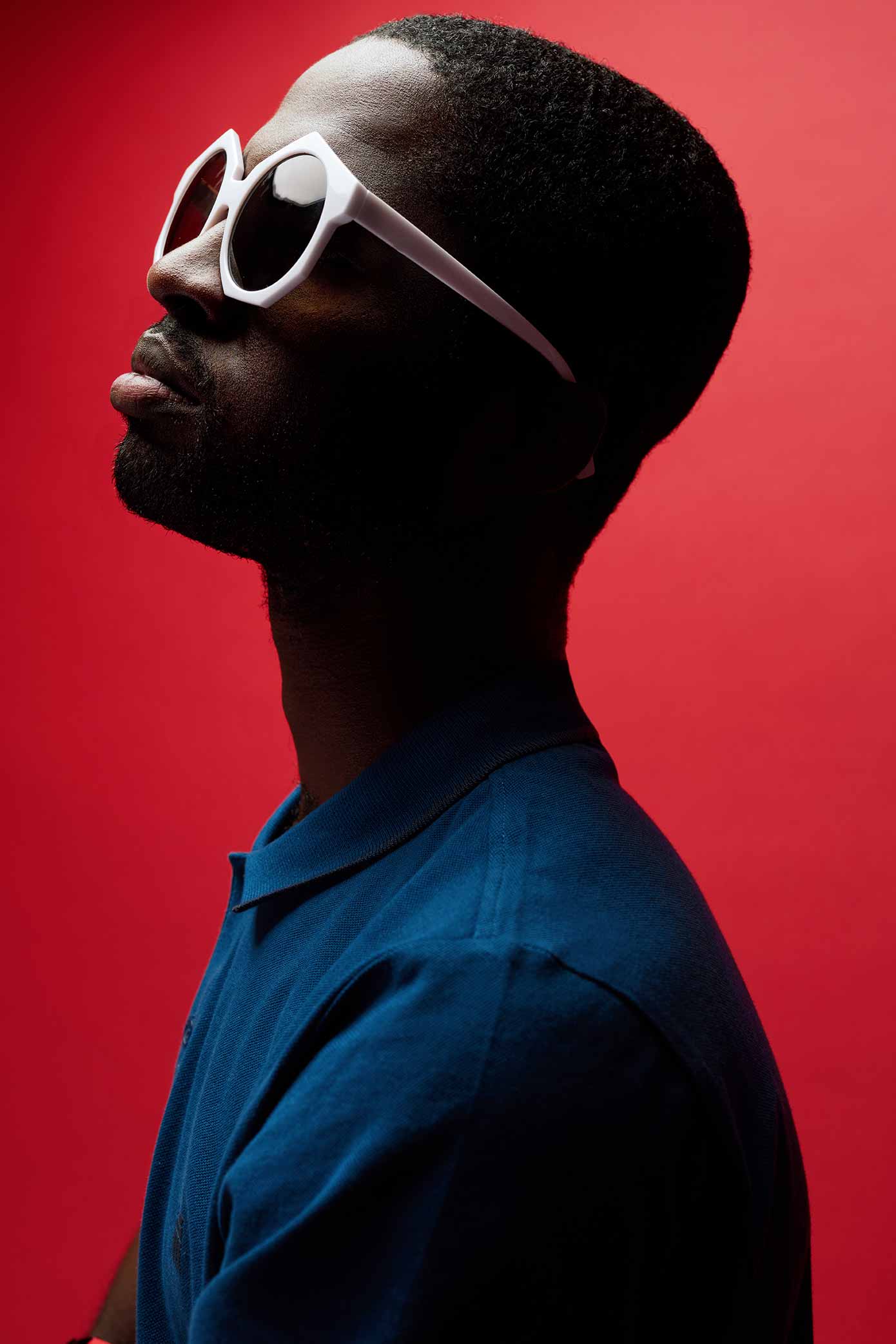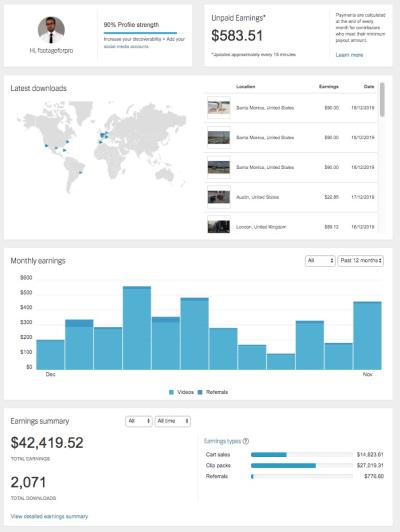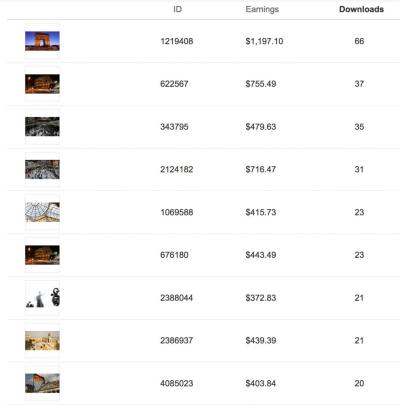Looking to get custom artwork made but unsure where to start? Shutterstock isn’t just a stock photo site—it’s also a vibrant community of talented artists ready to bring your ideas to life. Finding the perfect artist for your project might seem overwhelming at first, but with a little guidance, you can navigate the platform confidently. Whether you need a whimsical illustration, a sleek logo, or something entirely unique, knowing how to identify and connect with the right artist is key. Let’s explore how you can make your search easier and more effective on Shutterstock!
Understanding Shutterstock’s Platform and Artist Profiles

Shutterstock has grown far beyond its roots as a stock photo marketplace. Today, it features a diverse community of creators—including photographers, illustrators, and graphic designers—who showcase their work through artist profiles. These profiles are your gateway to discovering talented individuals who can craft custom artwork tailored to your needs.
When you visit an artist’s profile, you’ll find a wealth of information designed to help you decide if they’re the right fit:
- Portfolio Samples: A curated showcase of their best work, giving you a sense of their style and versatility.
- Biographical Info: Details about their background, experience, and artistic influences.
- Ratings & Reviews: Feedback from previous clients that can help you gauge their professionalism and quality.
- Services Offered: Some artists list specific services, including custom illustrations, branding, or portrait work.
- Pricing & Licensing: Clear info on costs, licensing terms, and how to initiate a project.
To find these profiles, you can use Shutterstock’s search filters, which allow you to narrow down artists by style, specialty, or location. Once you’ve identified potential artists, it’s a good idea to review their portfolios thoroughly, check reviews, and even reach out directly with any questions. This way, you ensure that your chosen artist understands your vision and has the skills to bring it to life. Remember, building a good relationship with your artist starts with understanding their work and communicating clearly about your expectations.
Steps to Search for Artists Specializing in Custom Artwork

Finding the perfect artist on Shutterstock for your custom artwork project might seem overwhelming at first, but with a clear plan, it becomes much more manageable. Here’s a simple step-by-step guide to help you navigate the process smoothly:
- Define Your Vision: Before diving into the search, clarify what kind of artwork you need. Are you looking for digital illustrations, portraits, abstract designs, or something else? Knowing your style preferences and project details will streamline your search.
- Use Specific Keywords: Head over to Shutterstock’s search bar and input precise keywords related to your project. For example, if you want a watercolor portrait of a dog, try searching for “watercolor dog portrait” or “custom pet illustration.” Be as descriptive as possible.
- Filter Results Effectively: Shutterstock offers various filters—such as image type, orientation, color, and more. Use these filters to narrow down your options and find images that closely resemble the style you envision.
- Explore Artist Profiles: When you come across artwork that resonates with your idea, click on it to view the artist’s profile. Many artists showcase their collections, and their profiles often include information about their specialties and experience.
- Check for Customization Options: Not all Shutterstock artists offer custom artwork, so look for those who explicitly mention custom commissions or personalized designs. Read the artist’s description and portfolio to see if they’ve done similar projects before.
- Reach Out Directly: Once you find an artist whose style matches your needs, use Shutterstock’s messaging system or contact details provided to discuss your project. Provide clear details, deadlines, and any specific requirements.
- Review Licensing and Pricing: Before finalizing, make sure you understand the licensing terms and pricing structure. Some artists offer different packages for custom work, so choose the one that fits your budget and usage rights.
By following these steps, you’ll turn what could be a daunting search into a straightforward process, helping you find an artist on Shutterstock who can bring your vision to life with a style that truly fits.
Tips for Evaluating an Artist’s Portfolio and Style
Once you’ve identified a few potential artists, the next step is to evaluate their portfolios and artistic style to ensure they’re the right fit for your project. Here are some friendly tips to help you assess their work effectively:
- Look for Consistency: Check if the artist’s portfolio shows a consistent style or skill level. Do their works align with the aesthetic you’re aiming for? A cohesive portfolio indicates a clear artistic voice.
- Assess Versatility: While consistency is important, versatility can be a plus if you’re considering different types of artwork. See if the artist can handle various themes, techniques, or mediums.
- Review Past Custom Work: Many artists showcase commissioned projects or personalized artworks. Pay attention to these pieces to see how well they adapt their style to client needs and whether they produce high-quality, detailed work.
- Check for Creativity and Originality: Does the artist bring unique ideas or a fresh perspective to their work? Originality is often a good indicator of talent and the ability to create standout pieces.
- Read Descriptions and Artist Statements: Artists often include descriptions or statements explaining their approach. These insights can help you understand their creative process and whether it aligns with your expectations.
- Examine Technical Skills: Look for sharp lines, balanced compositions, proper use of color, and attention to detail. Technical proficiency is key to ensuring the artwork will look professional and polished.
- Consider Feedback and Reviews: If available, read client reviews or testimonials. Previous clients’ experiences can shed light on the artist’s professionalism, communication skills, and reliability.
Remember, choosing the right artist isn’t just about the style you like but also about how well they can interpret your ideas and work within your project’s scope. Take your time exploring their portfolio, ask questions, and trust your instincts to find someone who truly understands your vision and can deliver stunning custom artwork.
How to Contact an Artist for Custom Projects
Once you’ve found an artist on Shutterstock whose style resonates with your vision, the next step is reaching out to discuss your custom project. It might seem straightforward, but approaching an artist professionally and thoughtfully can make all the difference in getting a positive response.
Most artists have their contact information listed on their profile, whether that’s an email address, a contact form, or links to their social media profiles. Here’s a simple process to follow:
- Read their profile thoroughly — Many artists specify whether they accept custom work and what their terms are. Respect their preferences and guidelines.
- Craft a personalized message — Avoid generic inquiries. Mention specific pieces of theirs that you love and explain why you think they’d be perfect for your project.
- Be concise but detailed — Share enough information about your project to give them a clear idea, but keep it brief enough to encourage a response.
- Specify your timeline and budget — If you have deadlines or budget constraints, mention these upfront to see if they’re a good fit.
Here’s a quick example of what your initial message might look like:
Hello [Artist's Name],I really admire your work, especially your piece "[Title of Artwork]." I'm interested in commissioning a custom artwork in a similar style for my project. Could you let me know your availability, pricing, and any guidelines for custom commissions? I’m hoping to have the piece completed by [date], and my budget is around [amount].Thank you for your time and consideration. Looking forward to hearing from you!Best, [Your Name]
Remember, patience is key. Artists are often busy with multiple projects, so give them some time to respond. If they’re interested, they’ll usually follow up with questions or proposals. Building a respectful and professional rapport right from the start can set the tone for a successful collaboration.
Communicating Your Requirements Clearly for Custom Work
Once you’ve connected with an artist and they’re open to your project, the next crucial step is communicating your requirements effectively. Clear communication helps ensure the final artwork matches your expectations and saves everyone time and effort.
Here are some tips to articulate your vision clearly:
- Create a detailed brief — Write down what you want, including the style, mood, colors, and any specific elements you want included or excluded. The more detail, the better.
- Use visual references — Share images, sketches, or mood boards that illustrate your vision. Visuals help bridge language gaps and give artists concrete ideas to work from.
- Discuss dimensions and format — Specify the size, resolution, and file format you need for your project to ensure compatibility with your intended use.
- Set clear deadlines — Agree on a timeline that works for both parties. Be realistic about how much time the artist might need, especially for complex projects.
- Outline revisions and feedback process — Clarify how many rounds of revisions are included and the best way to provide feedback. Constructive, specific feedback helps the artist make precise adjustments.
Communication isn’t just about sharing your ideas; it’s about actively listening to the artist’s input as well. They might suggest modifications that improve the final piece or notice details you overlooked. Maintaining an open dialogue fosters a collaborative environment where both sides feel heard and understood.
Here’s an example of clear communication:
Hi [Artist's Name],Thank you for your willingness to work on this project. I’ve put together a brief to help clarify my vision:- Style: Vibrant, cartoonish, similar to your "[Specific Artwork]" piece.- Subject: A cheerful family picnic scene in a park.- Colors: Bright and warm tones, especially yellows and greens.- Dimensions: 1920x1080 pixels, suitable for digital use.- Deadline: Two weeks from now, by [Date].Please let me know if you need any additional information or references. Looking forward to collaborating with you!Best, [Your Name]
By being detailed and considerate in your communication, you help set the stage for a smooth process and a final product that truly meets your expectations. Remember, clear, respectful dialogue is the foundation of a successful custom artwork project!
Ensuring a Smooth Collaboration and Managing Expectations
Once you’ve found the right artist on Shutterstock, the next crucial step is making sure that your collaboration goes smoothly. Clear communication is the cornerstone of a successful project, especially when it comes to custom artwork. It’s important to set the tone early and keep everyone on the same page throughout the process.
Start by clearly outlining your vision. Be as specific as possible—share details about colors, styles, themes, and any inspiration you have in mind. Providing reference images or sketches can be incredibly helpful for the artist to understand your expectations. Remember, the more clarity you offer, the fewer misunderstandings you’ll encounter down the line.
Establish a timeline for the project. Discuss deadlines upfront and make sure they’re realistic. Keep in mind that quality work takes time, so rushing can compromise the final result. Regular check-ins or updates can keep the project on track and give you opportunities to provide feedback or request adjustments.
Be open to the artist’s professional insights. They might suggest improvements or alternative ideas that could enhance the final piece. Respect their expertise, but also communicate your priorities. A good collaboration is a two-way street where both parties feel heard and valued.
To manage expectations effectively:
- Set clear milestones and review points.
- Discuss revision policies upfront—how many rounds are included, and what costs might be involved for additional changes.
- Keep the communication polite and constructive, even if you’re not thrilled with a draft. Remember, feedback should be specific and encouraging.
Finally, trust the process. Artistic creation can sometimes surprise you, in good ways! Patience and open dialogue will help ensure your custom artwork turns out just as you envisioned—and perhaps even better.
Finalizing Agreements and Payment Options for Custom Artwork
As your project nears completion, it’s time to formalize everything with a clear agreement and settle on payment options. Having everything in writing protects both you and the artist and makes sure everyone’s expectations are officially aligned.
Start by reviewing the scope of work, timeline, revision policies, and ownership rights. This can be done through a simple contract or even a detailed email confirmation. Key points to include are:
- Scope of Work: What exactly is being delivered?
- Deadlines: Final delivery date and interim milestones.
- Revisions: How many rounds are included, and what constitutes additional revisions?
- Ownership & Usage Rights: Who owns the artwork once completed? Are you purchasing exclusive rights, or is the artist retaining some rights?
- Cancellation & Refund Policies: Understand the terms if either party needs to terminate the project early.
When it comes to payment options, discuss what methods are acceptable. Common options include:
- PayPal
- Bank transfers
- Stripe or other payment gateways
- Platform-specific escrow services (if working through a marketplace)
Many artists prefer to receive a deposit upfront—often around 30-50%—with the balance due upon completion. This protects the artist and shows your commitment. Make sure to get an official invoice or receipt for your records.
Remember, clear communication about payments and deliverables from the start can prevent misunderstandings and ensure a smooth finalization process. Once everything is agreed upon and paid, all that’s left is to celebrate your new custom artwork and plan for its display or use!
Additional Resources for Finding and Working with Artists Online
Discovering talented artists and establishing successful collaborations can be streamlined with the right online tools and platforms. Here are some valuable resources to help you find and work effectively with artists for your custom artwork needs.
- Art Communities & Platforms:
- DeviantArt – A vast community showcasing diverse art styles, ideal for discovering unique artists.
- Behance – Showcases professional portfolios across creative fields, making it easier to find experienced artists.
- Upwork – A freelance marketplace where you can post your project and hire artists directly.
- Social Media & Networking:
- Communication & Collaboration Tools:
Tool Purpose Website Slack Real-time communication and project discussions slack.com Google Drive Sharing and collaborating on files and sketches drive.google.com Zoom Video calls and meetings with artists zoom.us
Leveraging these resources can significantly enhance your ability to find the right artist and foster a smooth collaboration process for your custom artwork projects. Remember to communicate clearly, set expectations upfront, and respect the artist’s creative expertise to ensure a successful partnership.


